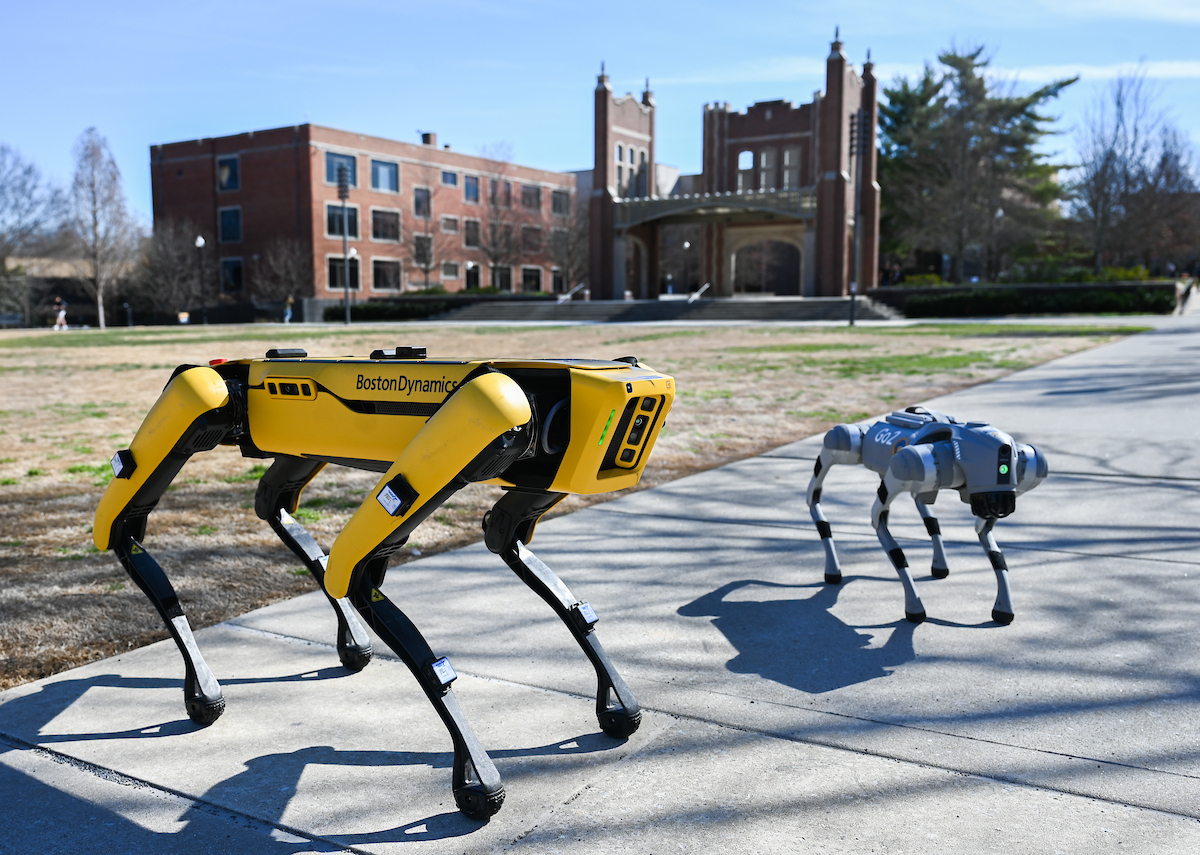Robotic Dogs and Signal Vulnerability: Why Communication Dependence Matters
Robotic dogs are one of the most striking results of combining robotics, artificial intelligence, and sensor technology. Unlike wheeled robots, their four-legged design allows for movement that closely imitates biological motion. This not only makes them agile but also opens new possibilities in security, rescue, and surveillance operations.

How Robotic Dogs Work: Core Principles
At the heart of every robotic dog lies a fusion of mechanical engineering, control algorithms, and perception systems.
Mechanical Design and Actuators
Each leg is powered by electric or hydraulic actuators that deliver precise torque and speed control. Coordinated by advanced motion algorithms, robotic dogs can walk, trot, and even run. Many models also include balance correction systems, allowing them to recover from pushes or navigate uneven terrain.
Sensor Integration
Robotic dogs rely on an array of sensors, including LIDAR, depth cameras, GPS, and gyroscopes, to build a real-time map of their surroundings. These inputs support obstacle detection, terrain adaptation, and spatial awareness—all essential for autonomous movement.
AI and Decision-Making
Modern robotic dogs integrate AI-driven modules that process sensor data, assist in navigation, and perform object recognition. This enables them to identify routes, detect humans, and even differentiate between friendly and suspicious activity.
Communication Systems
While some tasks can be executed autonomously, most robotic dogs remain tethered to a remote operator via wireless communication. Live video, audio, and telemetry are transmitted for monitoring and decision-making. This link is essential—but also represents the most vulnerable point in their operation.
Real-World Applications of Robotic Dogs
Security and Surveillance
Robotic dogs are increasingly deployed in border patrols, airports, and industrial facilities. Equipped with thermal imaging and live video transmission, they can cover large areas without fatigue, offering continuous monitoring that complements human security forces.
Disaster Response
In collapsed buildings or toxic zones, robotic dogs can operate where humans or traditional machines cannot. Outfitted with microphones and chemical sensors, they serve as scouts for rescue teams, locating survivors and detecting hazards before human entry.
The Hidden Weakness: Reliance on Wireless Signal
Despite their sophisticated design, robotic dogs remain highly dependent on uninterrupted communication networks. If their wireless link is disrupted, many models freeze or shift into passive safety modes. Even semi-autonomous models cannot fully replace operator input during complex missions.
This reliance creates a paradox: the more robotic dogs are integrated into critical operations, the more we must acknowledge their vulnerability to signal disruption.
Jammers as a Control Measure
Robotic dogs deliver clear advantages in surveillance and rescue, but their dependence on wireless signals also introduces potential risk. If deployed without authorization—such as inside a sensitive facility or private property—they could collect information or interfere with normal operations.
In such cases, the ability to temporarily cut their communication link becomes a practical safeguard. This is where Powerful Multi-Band all in one Portable Jammer can play a supporting role. By selectively blocking the operator's control channel, security teams can neutralize an unauthorized robotic dog. Far from limiting innovation, this ensures that technology designed for protection does not become a threat itself.
